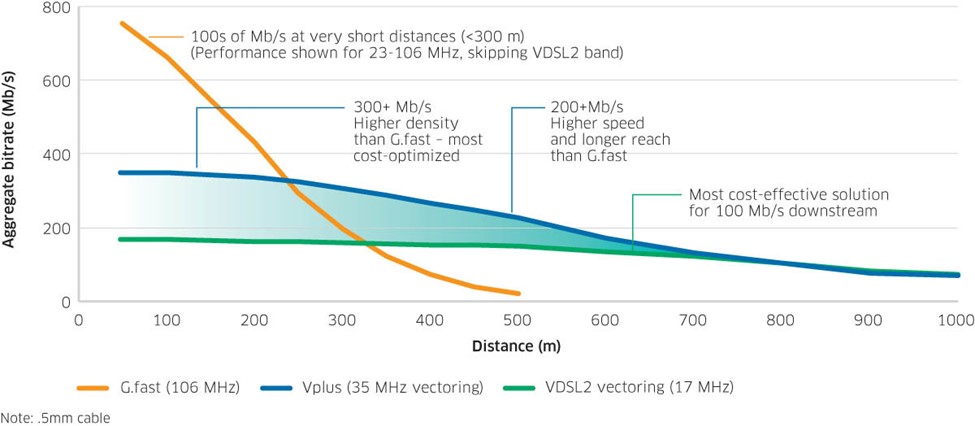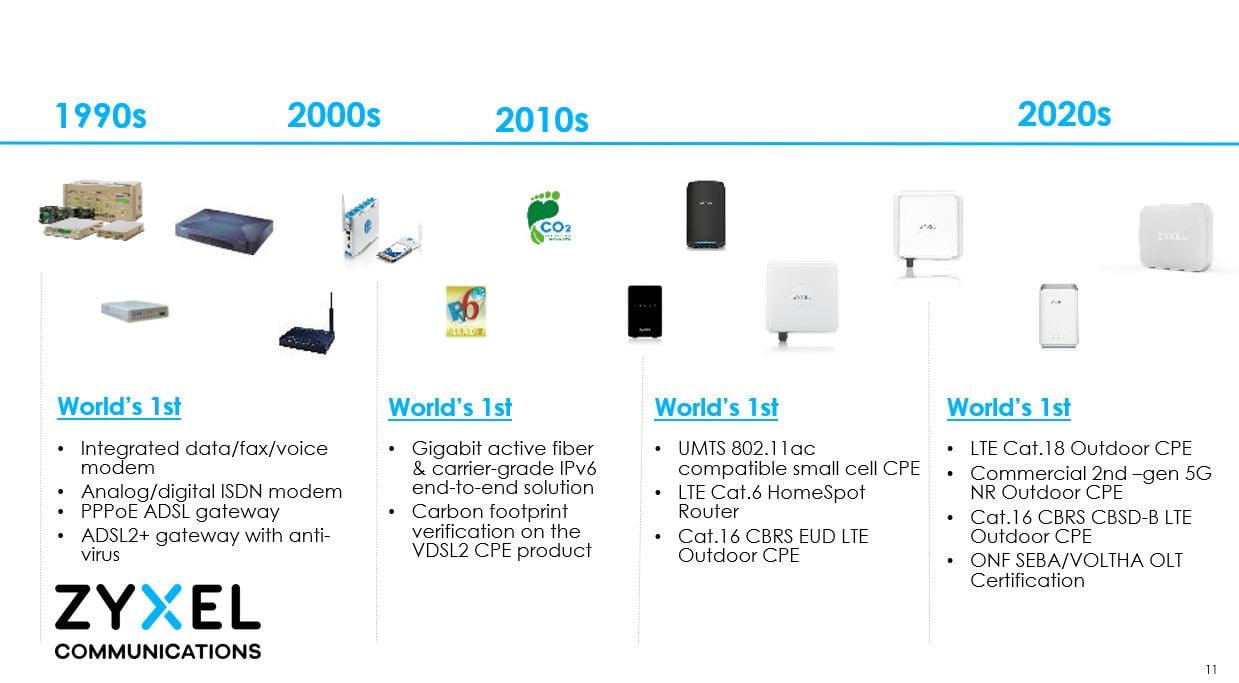.png)
VDSL2: Fiber Speed and Reliability over Copper

While the title of this blog probably raised a few questions or gave pause to that next sip of coffee, the fact remains many markets still have VDSL2 delivering broadband services to homes and businesses. Whether voice, video, and/or data services, DSL has continued to provide proven broadband services across North American markets.
Yet with all of the push for fiber and the investment required including equipment, the fiber plant itself, training, cost of right of way approvals, etc., the fact remains copper can still deliver HSIA.
So, let's explore "why copper" a bit more and see if it is something you should continue to offer your customers while planning how to migrate your network to fiber.
A Brief History: Digital Subscriber Line (DSL) Technologies
In the mid-1980s, engineers at AT&T’s Bell Labs in New Jersey developed an Asymmetric Digital Subscriber Line (ADSL) using “wide-band digital signals” at frequencies on twisted copper pairs already being used for voice or data services. ADSL’s signal used a higher rate than legacy (baseband) analog voice signal. By 1988, Bell Labs had filed the first patent on the technology. Bell Labs also recognized that asymmetrical traffic could provide 2x the bandwidth of symmetrical DSL. For end users such as consumers or SMBs, this provided larger downloads.
.png?width=1200&height=600&name=VDSL_1200x600-01%20(1).png)
The Magic Behind DSL
Bell Labs’ John Cioffi is widely regarded as the “father” of what would become DSL based on work in the area of DMT (discrete multitone modulation). DMT is a multicarrier technology that optimizes the use of a channel and throughput by sending different numbers of bits on different subchannels.
While ADSL and its successor ADSL2 began mass deployment in the 1990s, Bellcore and Stanford University had already begun work on delivering VDSL (Very High-Speed Digital Subscriber Line) with the goal of more bandwidth and reliability on copper loops. VDSL first launched in 2001 followed by VDSL2 in 2006, which offered ~150 - 180Mb/s based on the distance between the DSLAM and VDSL2 Gateway or Modem.
Fiber Speeds – Pair Bonding, Vectoring and Supervectoring
While VDSL and VDSL2 delivered voice, video, and data services over longer copper loops including the ability to offer new linear video services because of the improved bandwidth, newer offerings such as video conference calls and both SD and HD video streaming required more speed and quality. To meet this evolution, technologies including Pair Bonding and Vectoring were developed and by 2015, Supervectoring or Vplus/35B was approved and standardized by the ITU in G.933.2, Amendment 1.
Vectoring: For long copper loops servicing residential or SMB locations, VDSL2 with 17A provides Vectoring, a technology that reduces interference of adjacent copper within the copper bundle. How does this happen? The DSLAM calculates the interference on every pair in a bundle by sending two signals which are used to determine the calculated interference or crosstalk, and then cancelling takes place to eliminate the crosstalk. (The concept is very similar to “noise canceling” headphones…) Because of this capability provided by Vectoring, operators are providing speeds of +150Mb/s over copper – more than enough bandwidth to support streaming services such as a Netflix 4k video ( ~50Mb/s) along with web browsing (5Mb/s) and internet gaming (3 – 5Mb/s) simultaneously.
Pair Bonding. Another technology developed to improve copper speeds, Pair Bonding combines two standard VDSL2 lines into a single “virtual” connection based on the G.998.x ITU standard. As most VDSL2 devices that provide pair bonding also support 17A vectoring, line rates of 200Mb/s or more are available.
Supervectoring. VDSL2 Vplus/35B offers “ultra-broadband” speeds for copper loops up to 250 feet providing copper networks another another “jump” in speed. Lab testing has confirmed that Vplus/35B devices can achieve 300Mb/s on 250’ copper loops and +250Mb/s in field testing. In comparison, many carriers offer PON (fiber services) at 300Mb/s speeds, however with overhead, etc., actual speeds may be less. The Supervectoring standard was developed by Deutsche Telekom and standardized by the ITU to further reduce crosstalk and interference issues, thus improving speed, performance, and reliability providing “fiber-like” speed and quality across copper.
In addition, Supervectoring and Vectoring can co-exist in a copper bundle allowing the operator the flexibility to deliver 17A or 35B speeds based on the distance from the DSLAM.

Source: Sycomp, 2018
Zyxel’s DSL Super Solutions
Since 1993, Zyxel has provided carrier-class Modem technologies and innovations for Tier 1, 2, and 3 operators globally. In North America, operators such as Verizon, Sprint, TELUS, and many others recognized Zyxel’s quality, cost, and customer support, selecting ADSL2/2+ and VDSL1/2/2+ products for deployment of their copper networks along with Zyxel DSLAMs. Many of Zyxel’s early DSL products are still in deployment in customer locations around the world.

As the requirement to deliver broadband services in areas where fiber cannot be deployed or Fixed Wireless faces issues such as distance or interference, Zyxel’s DSL teams have continued to deliver best-in-class, award-winning products which are critical for these markets not only in the United States and Canada but also in EMEA, LATAM and other regions.
For US and Canadian customers, Zyxel’s current portfolio provides three options capable of delivering HSIA:
• DX4510-B SERIES - AX6000 WiFi 6 VDSL2 Bonding Gateway1,2
• VMG4927-B50A - Dual-Band Wireless AC/N VDSL2 Bonding Gateway1,2
• VMG4005-B50B - VDSL2 17a Bonding and 35b Single Line Bridge1, 2
NOTES:
1Supports 17A and G.vectoring
2Supports 35B
For your DSL, Fiber, WiFi, and Fixed Wireless needs, Zyxel provides a competitive, carrier-class portfolio of leading-edge products that will optimize your customer’s experiences while ensuring maximal ROI and reliability. And while Fiber continues to grow in the North American market and globally, for those operators who want to deliver fiber-like speeds VDSL has the technologies that will support 4k streaming, gaming, or web surfing at competitive prices.



